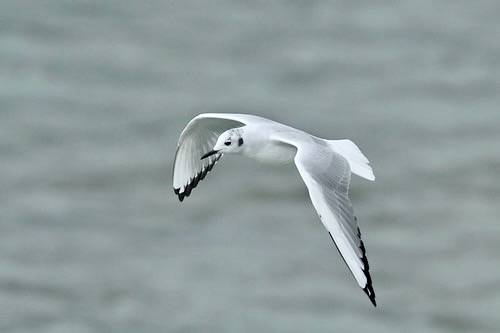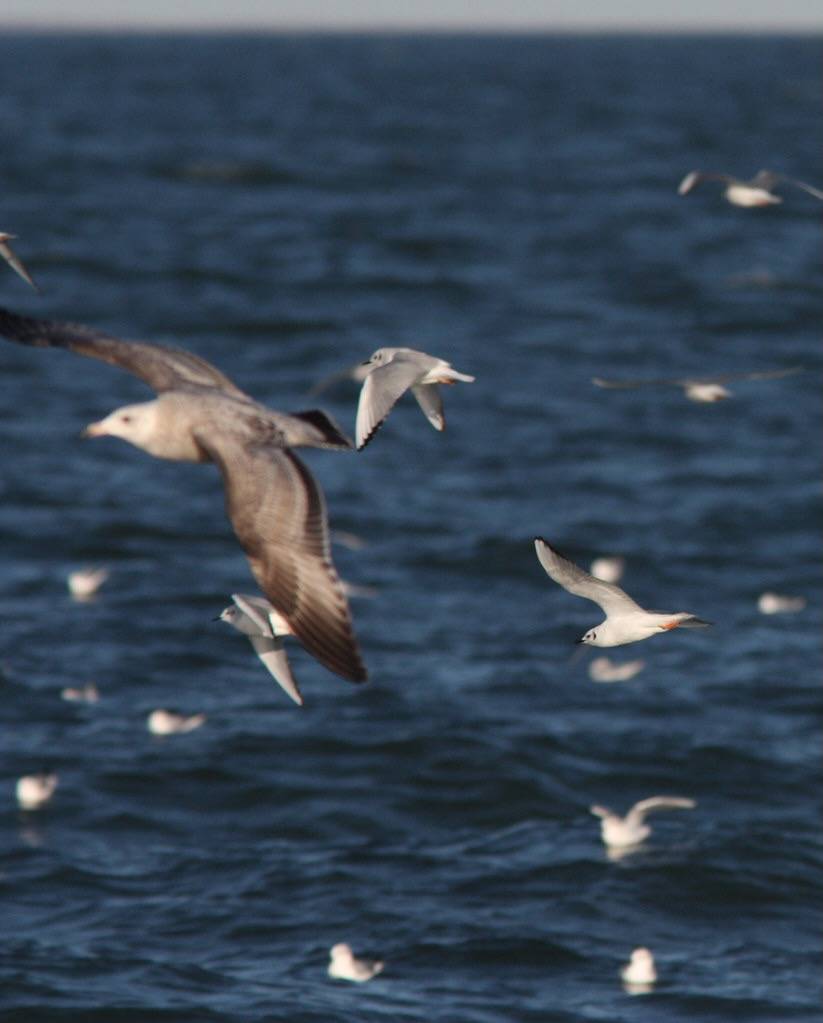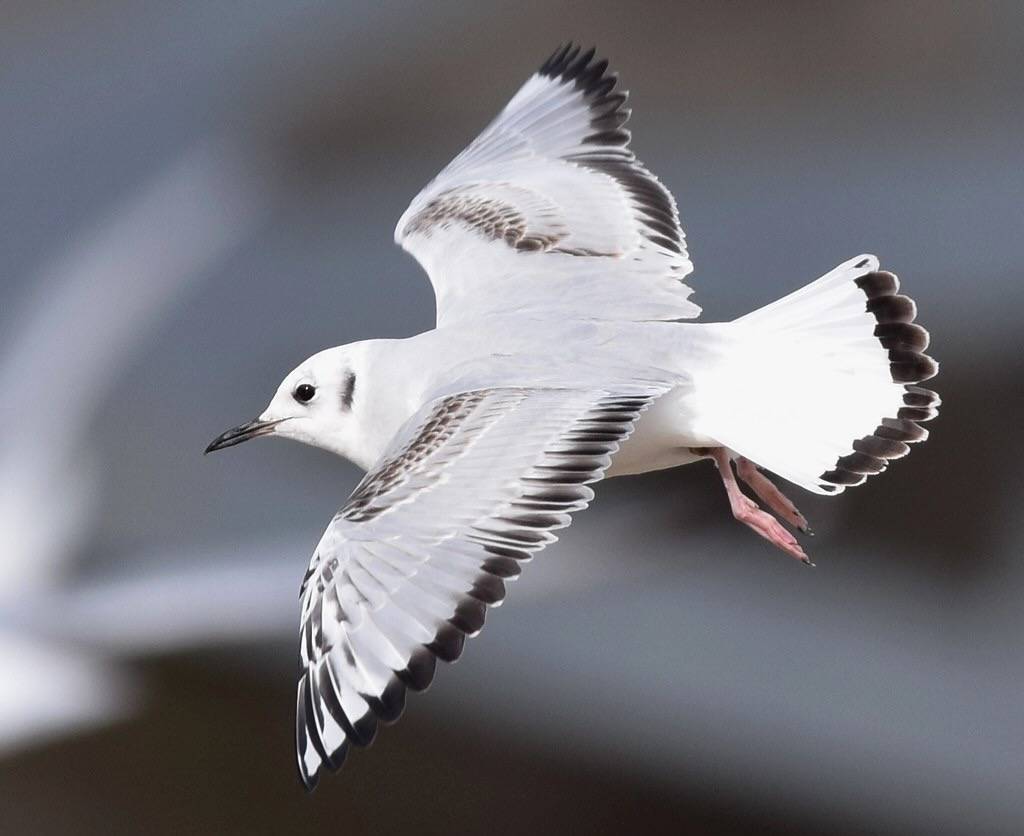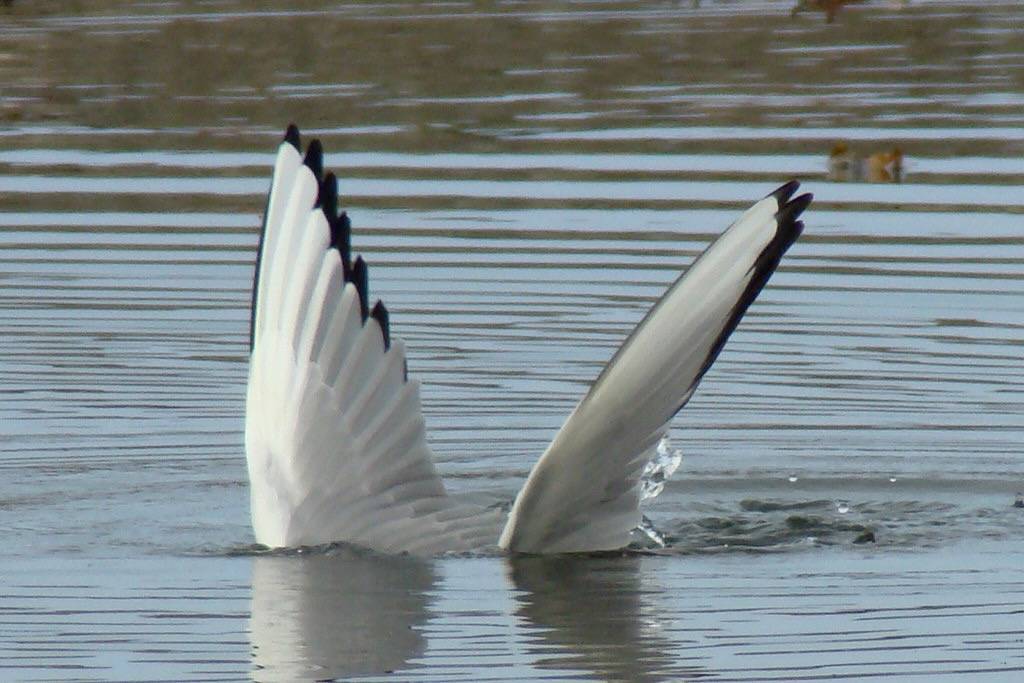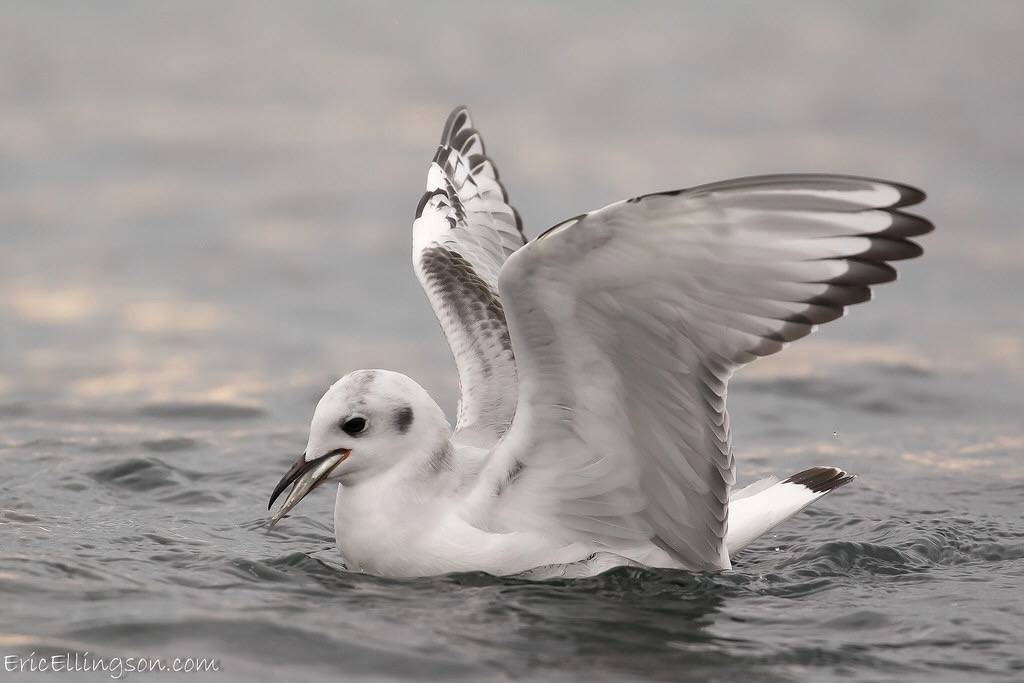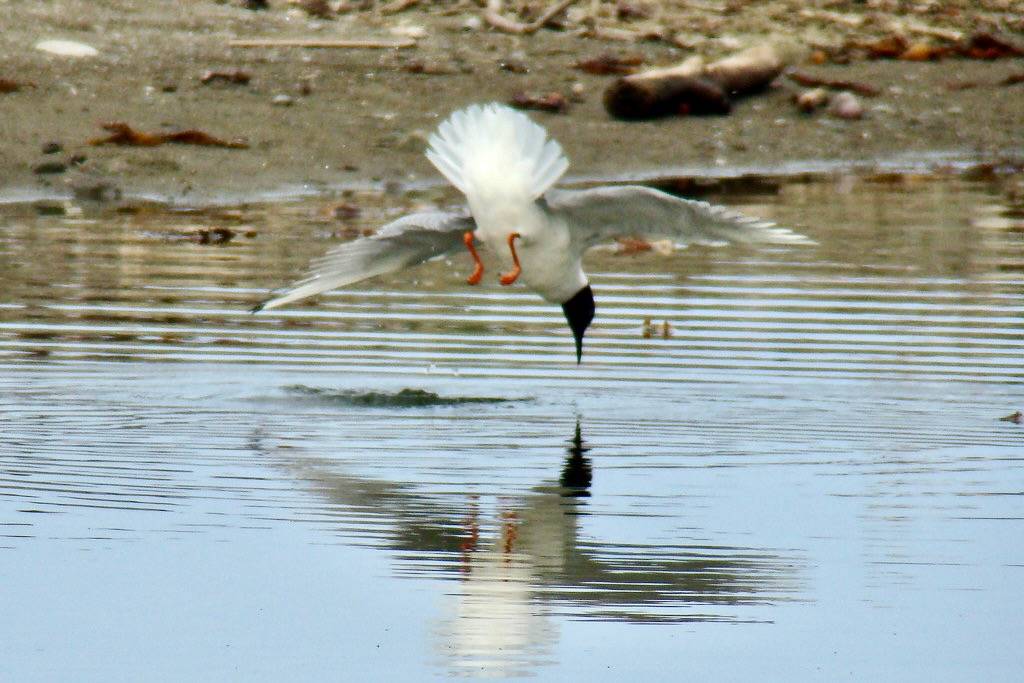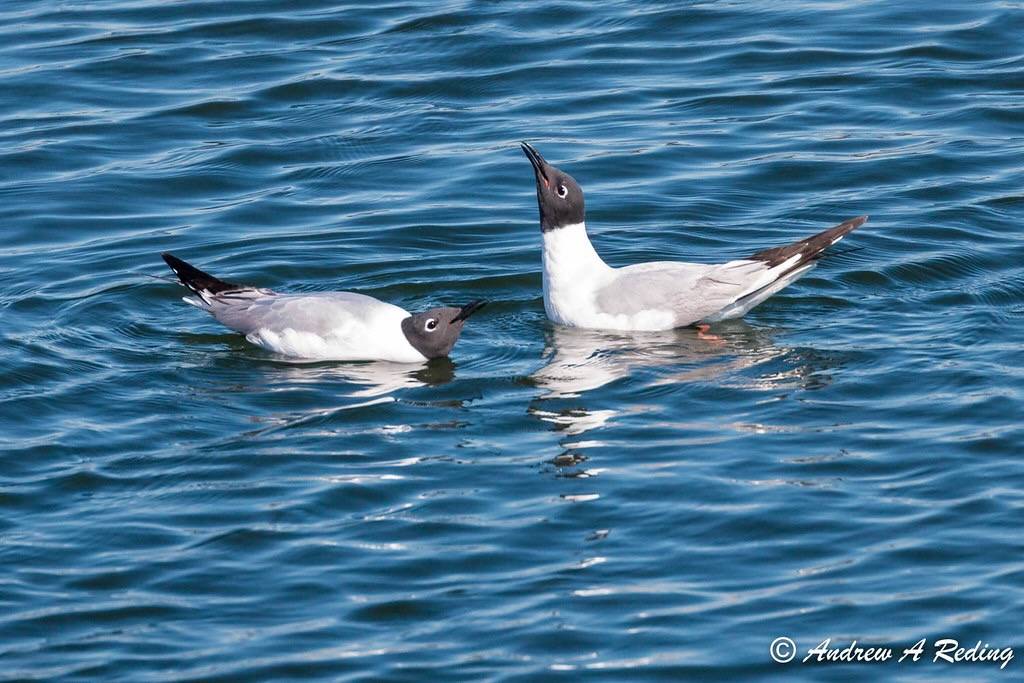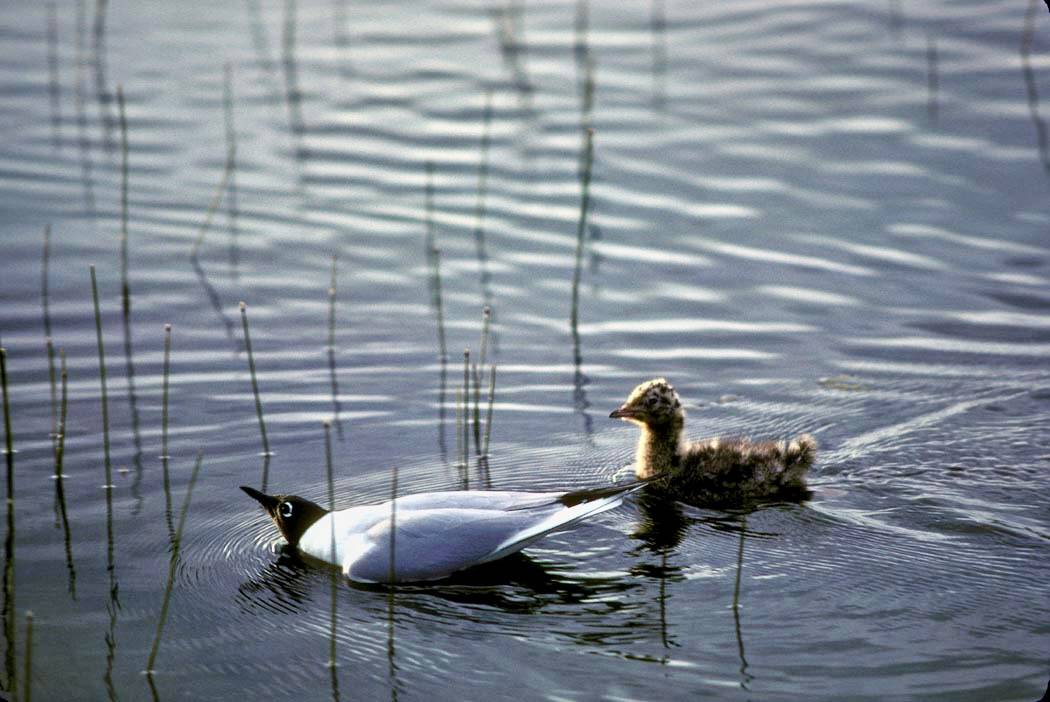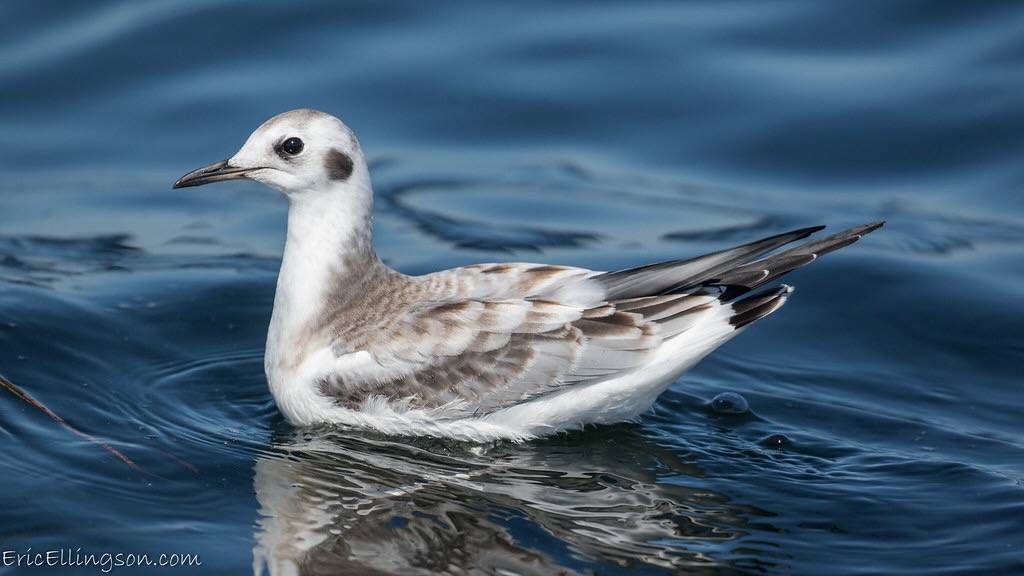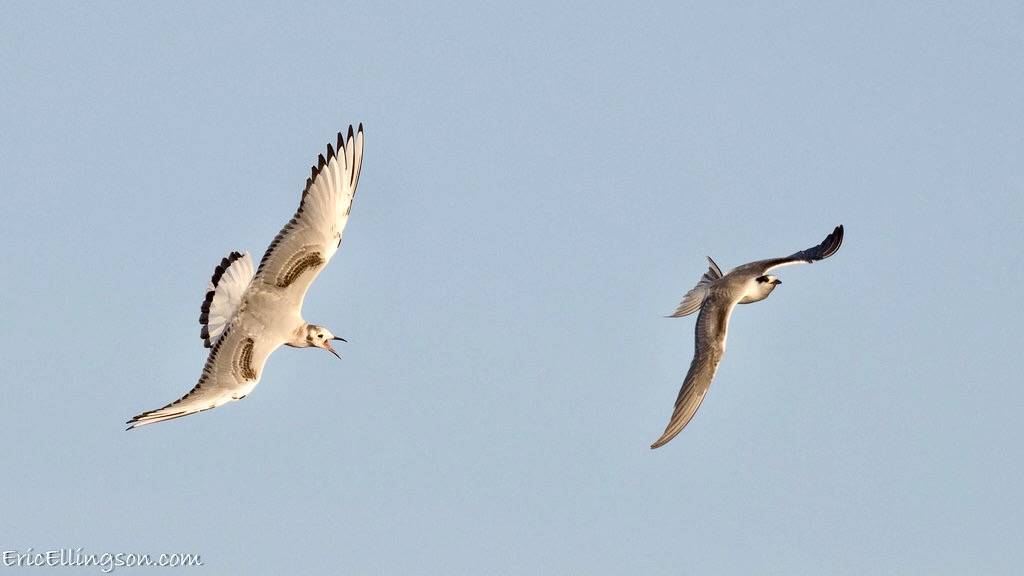Bonaparte’s Gull
Bonaparte's Gull is in its non-breeding plumage and does not have a black hood when it visits Salter Grove. Its small size is very evident when it is seen alongside the larger and more common Herring Gull or Great Black-backed Gull.
It breeds along the edges of lakes and streams in the boreal forests of western Canada and Alaska. Unlike other gull species which nest on the ground, Bonaparte's Gull builds its nest in coniferous trees such as Douglas-fir, hemlock, jack pine, spruce, and tamarack.
Nests over 50 feet above the ground have been reported, suggesting that maybe newly hatched Bonaparte's Gull chicks do not leave the nest and walk about immediately as do ground-nesting gull species. Hatchlings can stand up within a day but usually remain quietly in the nest for a week.
Bonaparte's Gull is further distinguished from other gulls by its habit of mainly eating insects during the breeding season. It is an agile flyer which allows it to capture small flying insect prey with ease. However, it is also adept at diving for small fish and swimming for marine invertebrates, or hunting on the ground for ants, beetles, earthworms, grasshoppers, and locusts, in agricultural fields.
After breeding it migrates south in flocks across much of North America to winter along both coasts as well as in the Great Lakes. Some even migrate as far south as Panama.

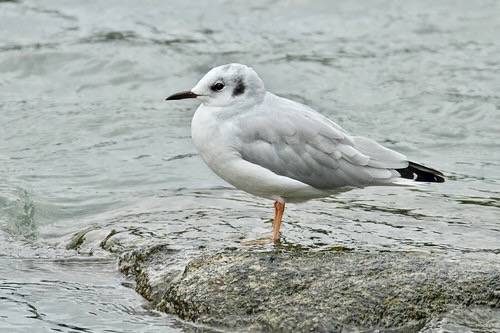
.jpg?w=350?blur=10)
.jpg?w=350?blur=10)

